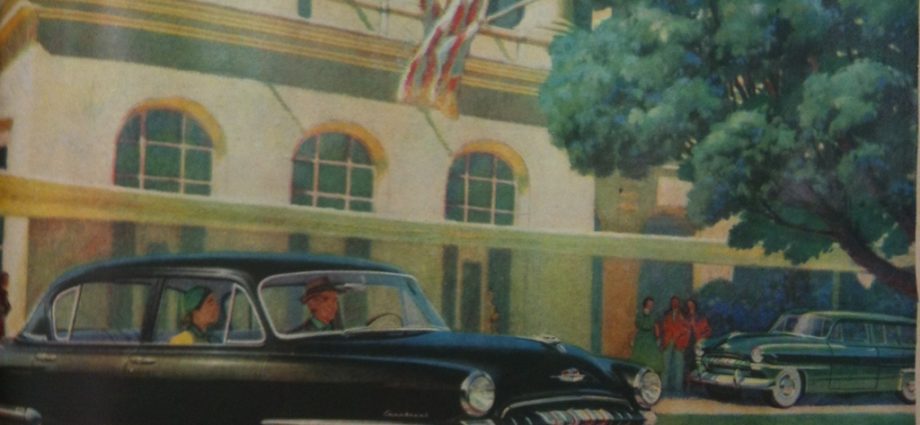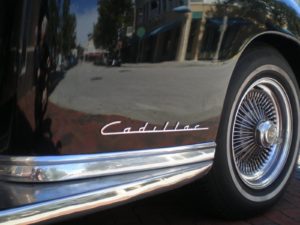WHITE SULPHUR SPRINGS – Ran across this ad in an old Life magazine, and it made me immediately think of how much the auto market today might never understand the motorcar brand Plymouth. Pictured here, a drawing of a Plymouth in front of The Greenbrier, the West Virginia resort.
Plymouth, a Chrysler brand from 1928 to 2001, was at some times as large a brand as Ford and Chevrolet, as it was the low-priced brand of Chrysler.
Of course, the reason I know so much about Plymouth cars, and am so obsessed, and like to write about them, is that my parents and grandparents drove them, and I was surrounded by them, and they were practical. The engine also made a sort of Torque-Flite sound, a whir whiz sound as distinct as the ignition sound on a Honda, which seems to have disappeared in some models. I wish someone reading would post a word description of the sound, to confirm that I am not imagining things.
We mostly bought Plymouths from Self Motor, in Farnham, Virginia on the Northern Neck. My neighbor growing up in Virginia Beach was Buddy Gifford, owner of Green Gifford in Norfolk, Virginia, and my cousin was married to the nice folks at Wynne-Wright Chrysler Plymouth in downtown Norfolk. So we all loved the Plymouth, in its various forms, and only once had a Dodge. The Dodge was forgettable, as it was white, with red interior. Yeck.
Plymouths were sensible cars for middle class families; tasteful, practical and reliable. As far as I recall, Plymouths were almost always priced slightly less than a Dodge, though I am not sure that was true all through their history. They always looked presentable, handsome and masculine, without being too much on steroids, like some of today’s Dodges. Like Volkswagen, Plymouths were something you were respectable in, even our recall-prone 1976 Plymouth Volare wagon, white with woodgrain paneling.
The idea of the Plymouth was to deliver a handsome looking car at a modest price, the sort of car you might be able to drive to the country club. Hence, the Life magazine ad here, in front of The Greenbrier. Imagine today, one of the lowest priced cars in the U.S., a Kia or some such, seriously looking good in front of a five-star resort. I would imagine it could be done, but the people in the car would have to be supremely self-confident. The other styling cue to note is that the rear is not jacked up or cartoonish. I am sure that car designers these days will say its about being aerodynamic, but keeping all the lines of the car parallel to the ground is what differentiates a cartoon from a respectable, handsome automobile.
Today, marketing does not allow such a line of thinking among customers. Dodge is marketed toward a male, racing audience, with the exception of the sensible Dodge Caravan and Journey. Thankfully, Fiat Chrysler still produces the Dodge Caravan, which had been slated to end production for the 2017 year. The odd thing is that their Dodge tag line is “muscle cars and sports cars” which seems a bit narrow for the American family market. Happily, the Caravan at least seems close to level in its side elevation, and is respectable wherever it goes.
The Plymouth line was killed off by Chrysler in the early 1990s. I still believe it was a mistake, like the killing off of Marshall Field’s by Macy’s. They say it was about sales, but I think it was a larger issue. The culture of money has infected all aspects of consumer culture, including many of the people who make decisions about such things. Many marketing people do not understand that normal folk often do not wish to make a flashy statement with their cars. Toyota, however, has been the opposite of this approach, and has delivered sensibly styled cars, priced well but not extremely, that anyone, of any age or income group, would be happy to drive.









